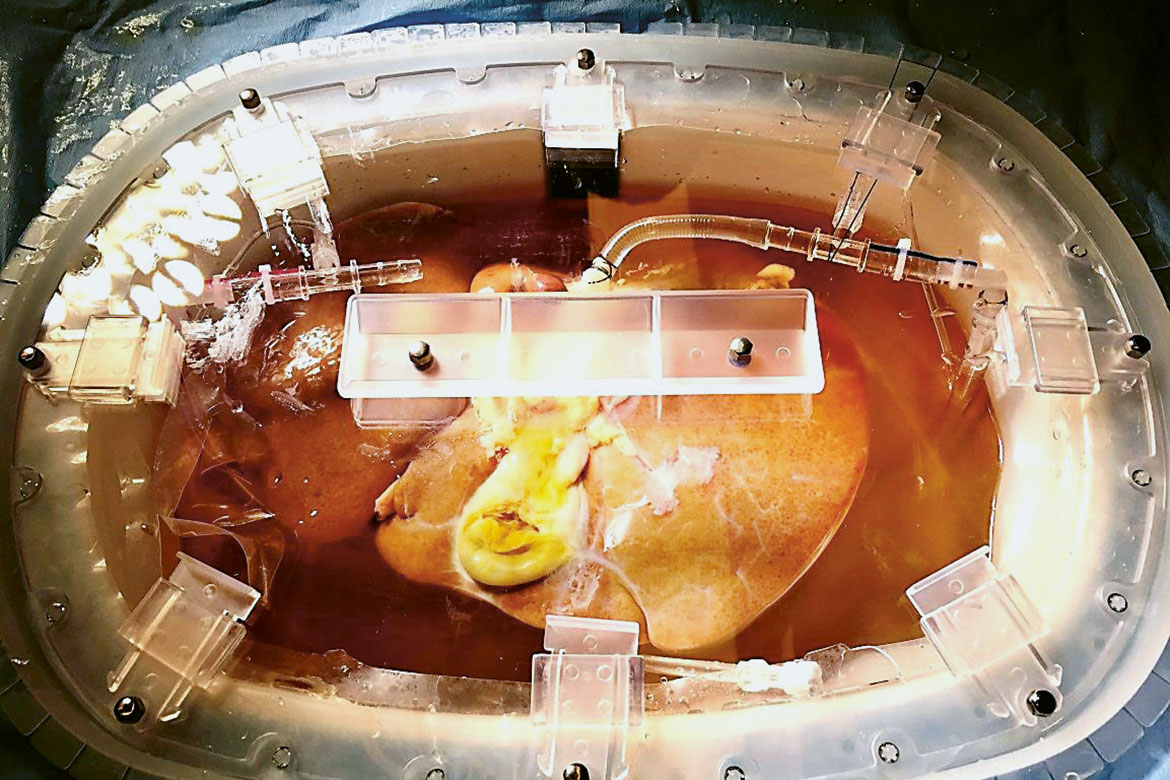Successful transplants with bad livers
Simple, but effective. Even a donor liver in poor condition can be transplanted – thanks to a special preparatory treatment.

A donor liver is here cooled down and flushed through with large amounts of oxygen. | Image: Philipp Dutkowski
A new procedure has been developed by Philipp Dutkowski and his team of surgeons at the transplant centre of the University of Zurich, making it possible to salvage donor livers of poor quality: i.e., with a pronounced lack of oxygen. The donor organ is attached to a perfusion machine and flushed through with an oxygen-rich solution at 10 degrees Celsius for up to two hours. Cooling the liver aims to restrict the liver’s energy expenditure, while the increased supply of oxygen maintains the metabolism of its cells.
Dutkowski’s experience thus far has proven that this technique, called ‘hypothermic oxygenated perfusion’, can prove itself in practice. He has already transplanted 21 critical donor livers that were pre-treated in this way. Despite their adverse condition at the outset, 18 of these organs were still fully functioning five years later. This proportion is the same as for transplants with healthy livers.
“I came up with the method 22 years ago already”, says Dutkowski. “But no one was interested back then, because there was little need for donor livers”. Today, however, his procedure is gaining a lot of attention. “There are sceptics, to be sure. They claim that such a simple technique can’t possibly work”, he admits. This is why he and his Zurich colleagues are currently engaged on a large-scale, detailed study involving 14 European transplant centres. The initial results should be ready next year.




